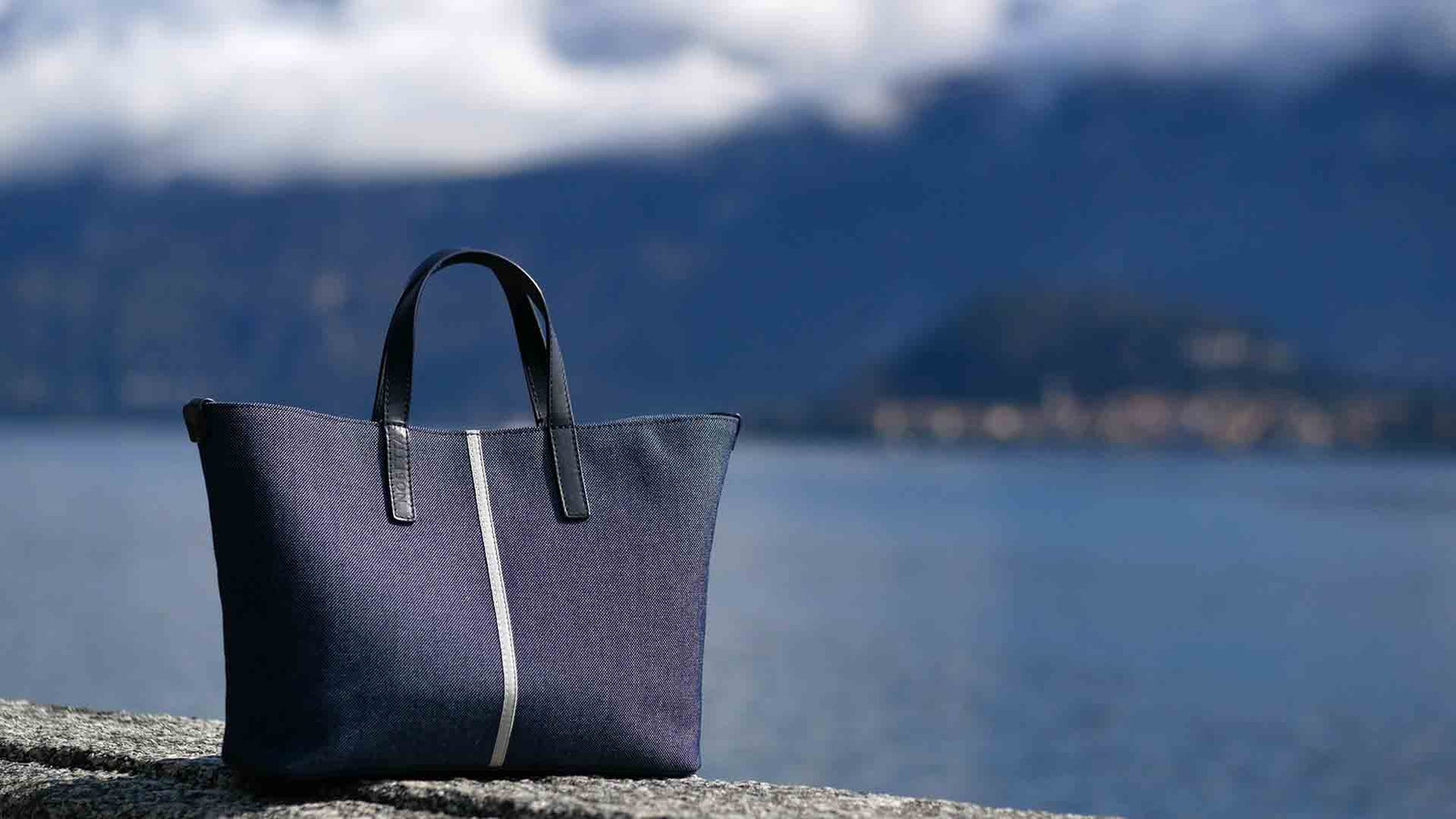Your Cart is Empty
Free EU Shipping · US Flat Rate $40
The textile story of Como stretches back over a thousand years, written in silk threads and woven through generations of family workshops. From prehistoric looms discovered in archaeological digs to today's cutting-edge textile innovations, this northern Italian district has transformed from a medieval wool center into the undisputed capital of luxury fabric production.
From Medieval Wool to Renaissance Silk
Como's reputation for exceptional textiles began in the 1300s with wool fabrics that captured the attention of European nobility. But everything changed in the early 1400s when the Silk Road brought a revelation from China: silk—light, elegant, and luminous—arrived at Como, one of the western terminals of this ancient trade route.
The lake's microclimate proved perfect for cultivating mulberry trees, essential food for silkworms. Within decades, hundreds of silk workshops emerged, staffed by thousands of skilled artisans and master weavers. These family operations would form the foundation of what became a global industry.
The Human Cost of Excellence
By the 1800s, family workshops evolved into modern industrial facilities. Yet the pursuit of quality came at a steep price. The spinning mills employed primarily women and young girls who worked long hours with their hands submerged in boiling water—necessary for producing the finest yarn quality, but causing severe skin damage. This painful practice continued well into the mid-1900s, a stark reminder that today's luxury heritage was built on generations of sacrifice and dedication.

The Entrepreneur Spirit: Innovation Through Tradition
What sets Como apart isn't just its history—it's how local entrepreneurs have continuously reinvented themselves while honoring centuries of craftsmanship. This dynamic between tradition and innovation defines the district's most successful companies.
The Ratti Legacy: Where Textiles Become Art
Antonio Ratti founded his silk company in 1945 with a revolutionary conviction: textile is a cultural product. In his visionary approach, experience, knowledge, and artistic experimentation weren't just tools for understanding contemporary trends—they were fundamental to creating quality.
Ratti's commitment extended beyond production. In 1995, his foundation helped establish the Antonio Ratti Textile Center at New York's Metropolitan Museum of Art, dedicated to textile conservation, restoration, and study. Today, the Ratti Group maintains an archive of over 400,000 fabric samples, each preserved with its original sketch and paper pattern—a living library that continues to inspire contemporary designers.
Designer Massimo Giorgetti of MSGM and Emilio Pucci captured it perfectly: "Ratti means past and future, technology and experimentation. Ratti, which has the biggest and the best textile archive in the Como region, offers not only an impeccable printing service but also special printed and jacquard fabrics."
Mantero: Four Generations of Silk Excellence
Founded in 1902, Mantero exemplifies how family businesses can thrive through adaptation. As Moritz Mantero, third-generation owner, explains with characteristic Italian flair: "The silkworm is a snob. He'll eat anything, but he produces silk only if he eats mulberry!"
This attention to detail, combined with speed and service, keeps Como competitive despite lower-cost Asian production. While China may offer cheaper prices, luxury fashion houses like Versace, Prada, and Chanel depend on Como's ability to deliver fast turnarounds and small, specialized runs. As Mantero notes, these brands expect "total service"—something only possible through geographic proximity and cultural understanding.
Donatella Ratti, president of the Ratti Group, reinforces this philosophy: "Creativity and high quality—that's our way to survive."

Limonta: From 1893 to Tomorrow
The Limonta Group story began in 1893 with traditional gobelins, matelassé quilts, and jacquard fabrics. But in the 1960s, founder Cavalier Giovanni Battista made a pivotal decision after traveling to America and Germany: he introduced thermoplastic polymer coating technology to Italy, revolutionizing the market with coated fabrics.
Today, Society Limonta represents this innovative spirit in home textiles. Their philosophy is refreshingly simple: never rest on your laurels. An exclusive fabric or unprecedented color isn't an arrival point—it's just another stage in an endless journey of research and experimentation.

A luxury Cotton-Linen Canvas of Limonta for Nosetta
Fashion Designers on Italian Quality
The world's leading designers consistently choose Como textiles for their uncompromising quality and creative possibilities.
Miuccia Prada, who transformed her family's leather goods company into a fashion empire, understands fabric intimately. Her groundbreaking use of industrial nylon in luxury handbags revolutionized the industry, but she has always relied on Como's master craftsmen for silk. As she once observed: "What you wear is how you present yourself to the world, especially today when human contacts are so quick. Fashion is instant language."
Giorgio Armani built his empire on impeccable tailoring and exquisite fabrics. His commitment to quality reflects Como's own philosophy—that true luxury lies in the details, in the hand-feel of silk, in the way fabric drapes and moves.
Gianni Versace, who pushed boundaries with bold prints and baroque designs, depended on Como's printing expertise to bring his vibrant visions to life. His sister Donatella continues this legacy, understanding that Como's technical mastery enables creative freedom.

Giorgio Armani long-time client of Lake Como mills
The Technical Institute: Investing in the Future
In 1866, Como entrepreneurs made a strategic decision that would secure the district's future: they founded a Technical Institute dedicated to teaching silk manufacturing. This wasn't just education—it was a deliberate commitment to passing knowledge across generations, ensuring that ancient crafts would evolve with modern technology.
This investment in human capital explains why, over a century later, Como still employs more than 20,000 workers across nearly 1,000 companies, producing 80% of European silk and 95% of Italian silk.

Jacquard weaving loom
Modern Masters of the Craft
Today, Como's reputation rests on companies that have operated for generations, each bringing specialized expertise:
Ratti handles the complete production cycle—from yarn treatment through weaving, dyeing, photo incision, printing, and finishing. They produce over 4 million meters of fabric annually for both fashion and interior design.
Mantero creates 740,000 meters of silk fabric and 1.6 million meters of prints each year, working with international brands including Kenzo, Vivienne Westwood, and Christian Lacroix.
Limonta maintains one of Italy's largest textile archives with at least 15,000 jacquard designs and over 100,000 print designs. Their "Made in Limonta" supply chain keeps rare crafts like warping, knotting, and weaving alive.
Clerici and Dedar continue family traditions while embracing cutting-edge technology, proving that heritage and innovation aren't opposing forces—they're complementary strengths.

A Living Tradition
Walk through Como today and you'll see evidence of this textile heritage everywhere. The former mill buildings have been transformed into commercial spaces or showrooms displaying centuries of craftsmanship.
But the real story isn't in the buildings. It's in the entrepreneurs who wake up each day determined to maintain their families' reputations for excellence. It's in the designers who spend hours perfecting a new jacquard pattern. It's in the workers who understand that their hands are links in a chain stretching back centuries.
The Nosetta Connection
This is the tradition Nosetta proudly upholds. By selecting luxury fabrics from Como—produced responsibly by companies like Limonta, Clerici, Dedar,.. — and offering them directly to customers, Nosetta continues a centuries-old commitment to quality, authenticity, and the refined Italian lifestyle.
Every Nosetta bag carries within it threads of history: the medieval weavers who established Como's reputation, the women who sacrificed their hands in boiling water for perfect yarn, the entrepreneurs who chose innovation over tradition's sake alone, and the master craftsmen who today maintain standards their great-grandparents would recognize.
This is more than fabric. This is the Bella Vita—beautiful life—woven into every thread, preserved through generations, and celebrated in products that honor both past and future.
---
*Today, Como produces 80% of Europe's silk and 95% of Italy's silk. When you choose Nosetta, you're not just buying an accessory—you're becoming part of a thousand-year tradition of Italian excellence.*
Certain places on Lake Como hold their secrets close. Villa La Cassinella, perched on a private peninsula near Lenno, is among the most discreet. As for its owner, speculation ranges from Richard Branson to various other names, though the villa itself maintains studied silence. Chef Alessia cooked here this summer, and she's sharing a holiday risotto recipe from those months—one that traces her journey from Como to Copenhagen's Michelin kitchens and back home.
Nestled in the historic villa of 19th-century opera legend Giuditta Pasta, Mandarin Oriental Lago di Como represents the pinnacle of Italian hospitality. The resort's breathtaking 40-meter infinity pool, designed by Herzog & De Meuron, appears to merge seamlessly with Lake Como's emerald waters. Century-old botanical gardens, Michelin-starred dining at L'ARIA, and an award-winning spa create an atmosphere of timeless elegance. In this sanctuary of authentic luxury, Nosetta's handcrafted Italian accessories find their natural home—understated pieces that complement the resort's philosophy of refined sophistication.
The small tote bag has become an essential accessory in the fashion world. Combining functionality and style, this compact bag offers enough space for an iPad, phone, and wallet without sacrificing elegance. Prestigious brands like Goyard and Marc Jacobs have elevated this accessory to a luxury icon, while Nosetta offers artisanal versions inspired by Lake Como at accessible prices. Made with high-quality materials, the small tote represents the perfect choice for those seeking a practical, elegant, and sustainable bag for everyday life.



